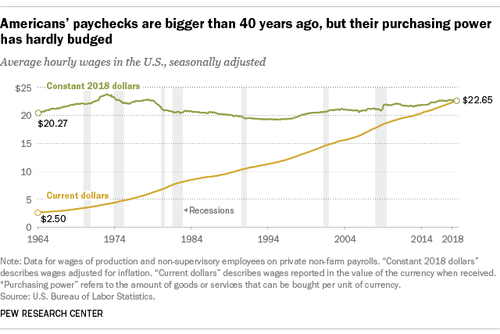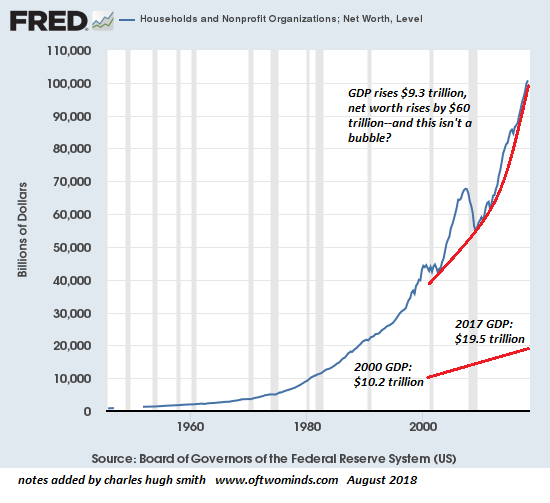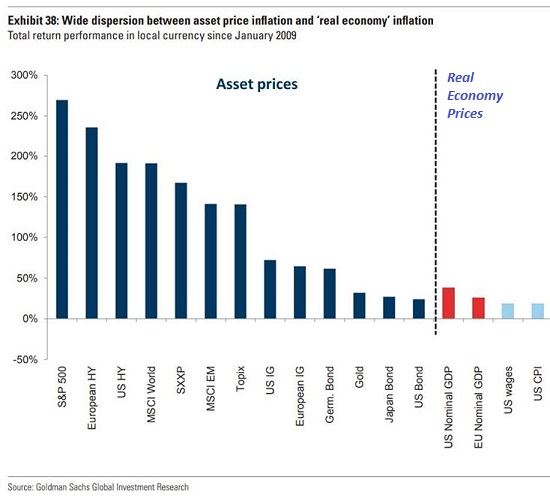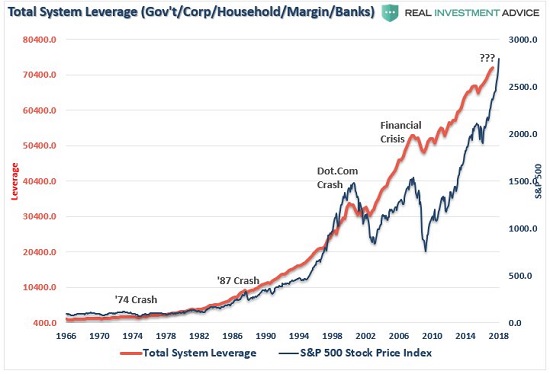The Crisis of Capital
These three dynamics render capital increasingly vulnerable to catastrophic losses as backstops and distorted markets fail.
The undeniable reality of the 21st century economy is that capital has gained while labor has stagnated. While various critics quibbled about his methodology, Thomas Piketty’s core finding–that capital expanded faster than GDP and wages/salaries (i.e. earned income from labor)–is visible in these charts.
Real wages have gone nowhere for decades. Only the top 5% of wage earners have outpaced inflation’s erosion of the purchasing power of their earnings.

Household net worth has soared $60 trillion while GDP expanded by $9 trillion.Compare the relative growth trajectories of the economy and net worth of assets. Clearly, capital has expanded at rates far above the expansion rate of the economy.

Assets (capital) have exploded higher while real-world inflation (including wages) has remained in line with GDP growth: modest at best.

Courtesy of Lance Roberts and Real Investment Advice, here is a chart of total leverage and the S&P 500 stock index. Leverage / debt hasn’t pushed wages higher, but it’s certainly pushed stock valuations to the moon.

While labor / earned income is clearly in a systemic crisis, so too is capital, though it may seem as if capital is far from danger.
Capital’s crisis has several sources. One is the financial system, from pension funds to passive index-fund investors to hedge funds to government tax revenue projections, has become dependent on outsized capital gains for its stability.
Any extended period of low growth rates for capital or–perish the thought, sustained losses– will destabilize every financial structure that is counting on a projection of current returns far into the future.
…click on the above link to read the rest of the article…